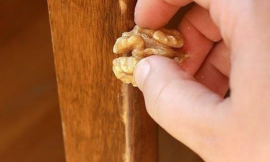Having mold growing on your walls is not only unsightly, but also unhealthy. It’s enough for mold to grow on 1 inch of your wall to find the entire top corner your home blackened with fungus.
But, when mold begins to grow on dry walls it should be cut out and disposed of. Wondering why? Well, because the drywall surface is porous and the tiny root mold structure will grow into the wall and attach itself strongly. However, if you discover it very early – when small mold patches appear – you will be able to remove it effectively. But if the mold is growing on the dry wall for quite some time, then you have to remove the dry wall structure because it has the ideal conditions to grow back.
Why is mold growing on your dry walls?

There are more than just one reasons of mold buildup, but the main ones are: leakages, condensation or high humidity levels. Actually, these causes may be decreased if you increase the ventilation in your house, meaning that you have to leave the windows open for more than just 10 minutes.
Is bleach and vinegar the best weapon for mold removal?

There are a lot of pros and cons, but the answer depends greatly on the amount of mold and more important, on the material it is growing on. Keep in mind: if you don’t clean mold correctly, it will keep coming back.
DO NOT use bleach in any circumstance. Chlorine turns to gas and evaporates into the air leaving the water within it to cause the sub-surface mold to start growing again. A bleach and water solution may work on non-porous surfaces, but then so will any other cleaning products. Dry walls typically consist or porous materials that require a surfactant type cleaning/sanitizing product that will kill mold below the surface.
You must also ensure you don’t expose yourself or others to mold when cleaning it, as well as prevent the spores from becoming liberated into the air and spreading throughout a building.
White vinegar NOT BLEACH. Wet the surface thoroughly and let it sit for 15 minutes before attempting to wipe it up. Any highly acidic solution will do. Once you have wiped up the initial issue, consider retreating the same area and the area surrounding the staining an additional time.
However, this DOES NOT resolve the air quality issue, just the topical issue of mold growth. Be careful to not clean up something larger than a few square feet by yourself. Attempting to clean up a large patch of mold that has been left to grow for a long period of time can result in growth elsewhere in your home and respiratory issues if you have too much exposure.
The answer is VINEGAR. It seems that this common household ingredient is capable in removing the mold root from any porous surface such as dry wall. Although, you have to be smart and get a specialized advice from someone before you tackle a large project on your own.
Vinegar-Based solution to remove mold on dry walls

- 2 tablespoons borax
- 1/4 cup white vinegar
- 2 cups hot water
Combine the ingredients above in a bowl, stirring until the borax dissolves. Pour into a spray bottle and liberally apply on painted walls, tile or other non-porous surfaces. Scrub thoroughly and wipe clean. Spray again and let sit 10 minutes before wiping dry.







